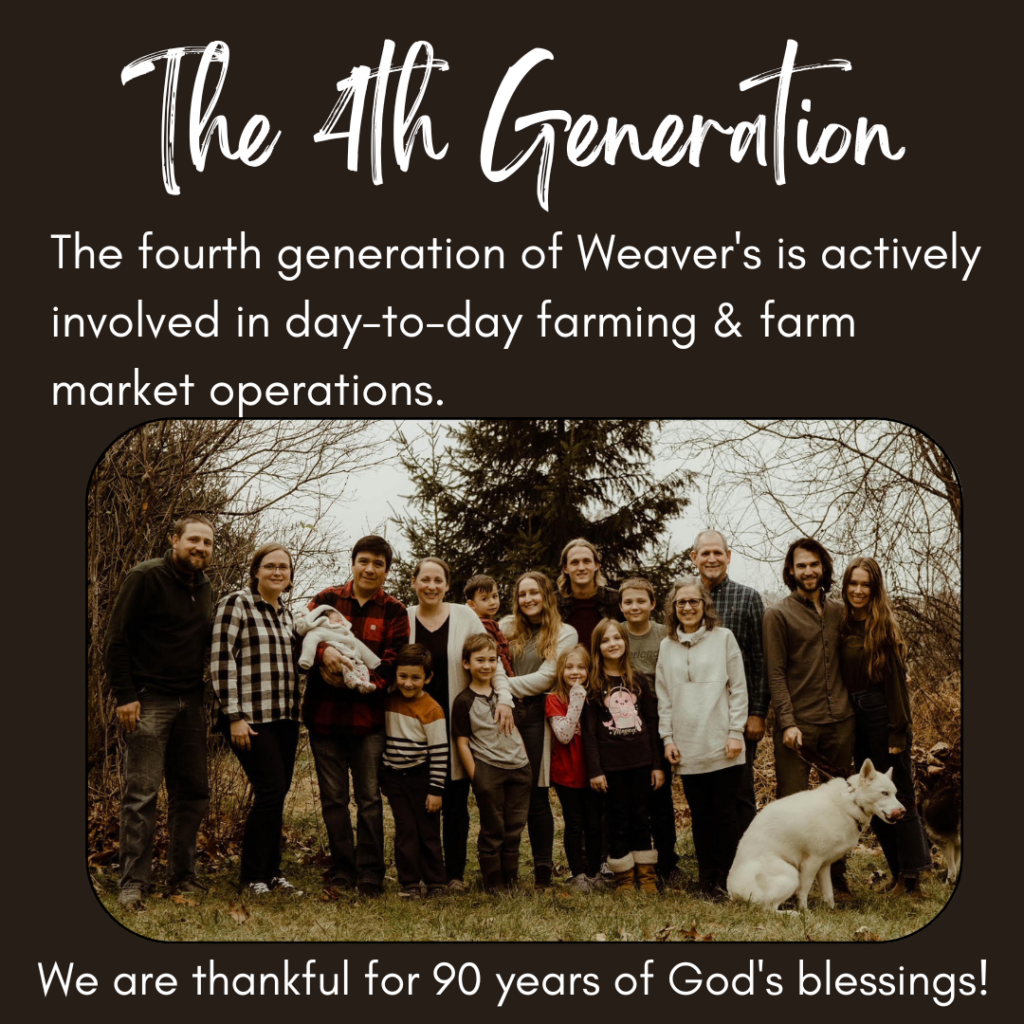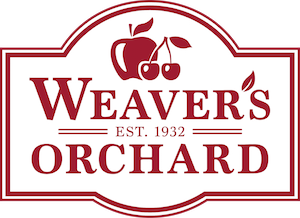
In 1978, Mary B. Stoltzfus wrote an autobiography titled God’s Care for an Orphan–a 20-page photocopied book interspersed with photographs of her family, written when she was in her early 70s.
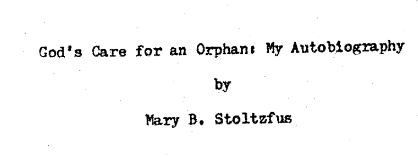
Her story of God’s care for an orphan is also the story of God’s care for the Weaver family throughout our family history. Mary B. Stoltzfus’s maiden name was Mary Weaver–she was the sister of Daniel Weaver, who was the grandfather of Ed Weaver, the current president of Weaver’s Orchard.
A Thriving Farm
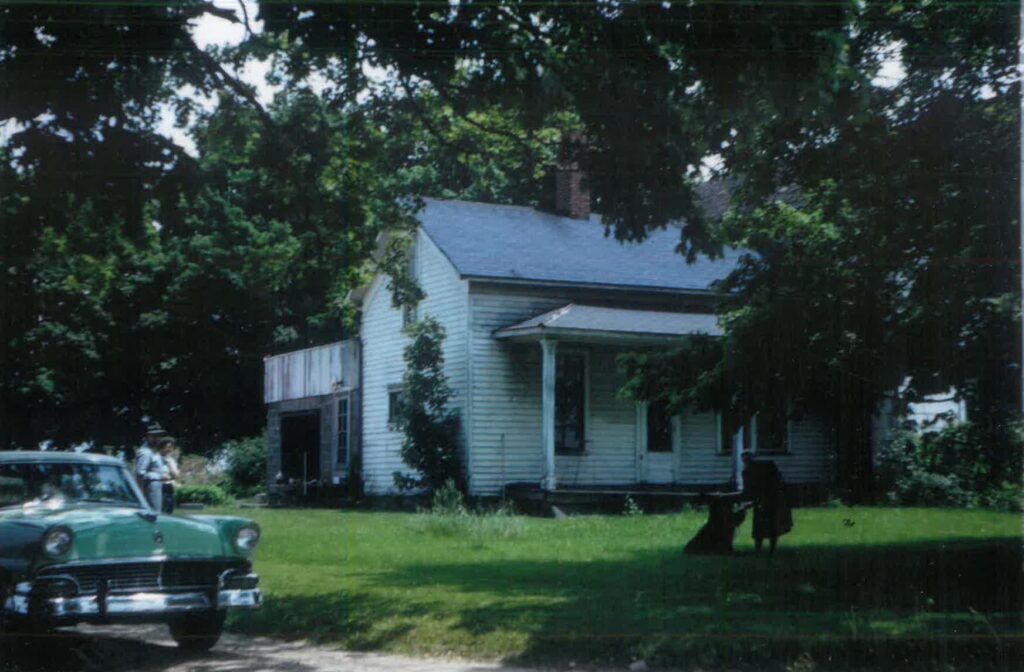
Mary’s autobiography describes how her parents, Jacob and Lizzie Weaver, owned a 135-acre farm in Lebanon, Delaware, near the banks of the St. Jones River. It was on this farm that Jacob and Lizzie’s children grew up, learning from their parents’ example of hard work and innovation.
“My father was a man with good management and really made things move,” Mary wrote. “Father planted trees by the hundreds and had five acres of grapes. He also grew asparagus, strawberries, and tomatoes to make money to buy more trees, which were five cents apiece.”
A Sudden Tragedy
Then, one chilly day in early March 1918, the first of several tragedies struck the family. Jacob Weaver had been working in the orchard all day trimming grapes.
“I can still see him standing on the end of the porch looking at the orchard that evening,” wrote Mary. “As a child I wondered what he was looking at.”
After supper that evening, Jacob became very ill. Lizzie called the doctor, but nothing could be done. Jacob died of a heart attack that evening, leaving behind his wife and eleven children, with a twelfth on the way.
“Those cold March days I will never forget,” wrote Mary. “We were so sad. We were left without a supporter; but God never forsakes his own.”
Lizzie Weaver took over managing the farm while pregnant. Mary saw her crying many times. That November, Lizzie welcomed a daughter, Elizabeth, and her spirits lifted.
“Where There’s Life, There’s Hope”
1918 was to hold more tragedy for the Weaver family and for many families across the world. In 1918, a flu pandemic swept across the world and left around 550,000 people dead in the United States alone.
“The winter of 1918 was unforgettable,” Mary reflected. “The flu was so bad that the churches, schools, and many businesses were closed and many people died.”
Three of Jacob and Lizzie’s sons caught the flu. One of them, Abe Weaver, was so sick he needed a lung removed. Two doctors and a nurse came to the Weaver farm and performed the operation on a makeshift operating table Abe’s brother Jake managed to rig up. After the operation, Abe was so close to death one of the doctors said it was not even worth sewing him up. The other doctor disagreed. “Where there’s life, there’s hope.” They sewed him up, and after many weeks, he recovered.
“He was baptized in our house after the operation,” Mary wrote, “and got stronger slowly…. God blessed him with good health and he lived to be seventy-six years old.”
Another Tragedy
Busy caring for her children in their illness, Lizzie put off caring for her own health. Soon, she grew ill herself, not with the flu but with gallstones. She had to travel by train to a hospital in Wilmington for a gallbladder operation. Sadly, three days after the surgery, she died of complications.
The children drove in a big Buick to Pennsylvania, where their mother could be buried in the Mennonite cemetery beside their father. The only child who was not there was their brother Henry, who was in Illinois at the time and could not be reached.
“He said he had a feeling he was needed at home,” wrote Mary. “He started out for home with an old car and had all sorts of trouble along the way. God led him to stop at the Lancaster railroad station to wash up before driving on to Delaware. In God’s providence, there we met Henry while we were waiting for the train that carried our dear mother’s body.”
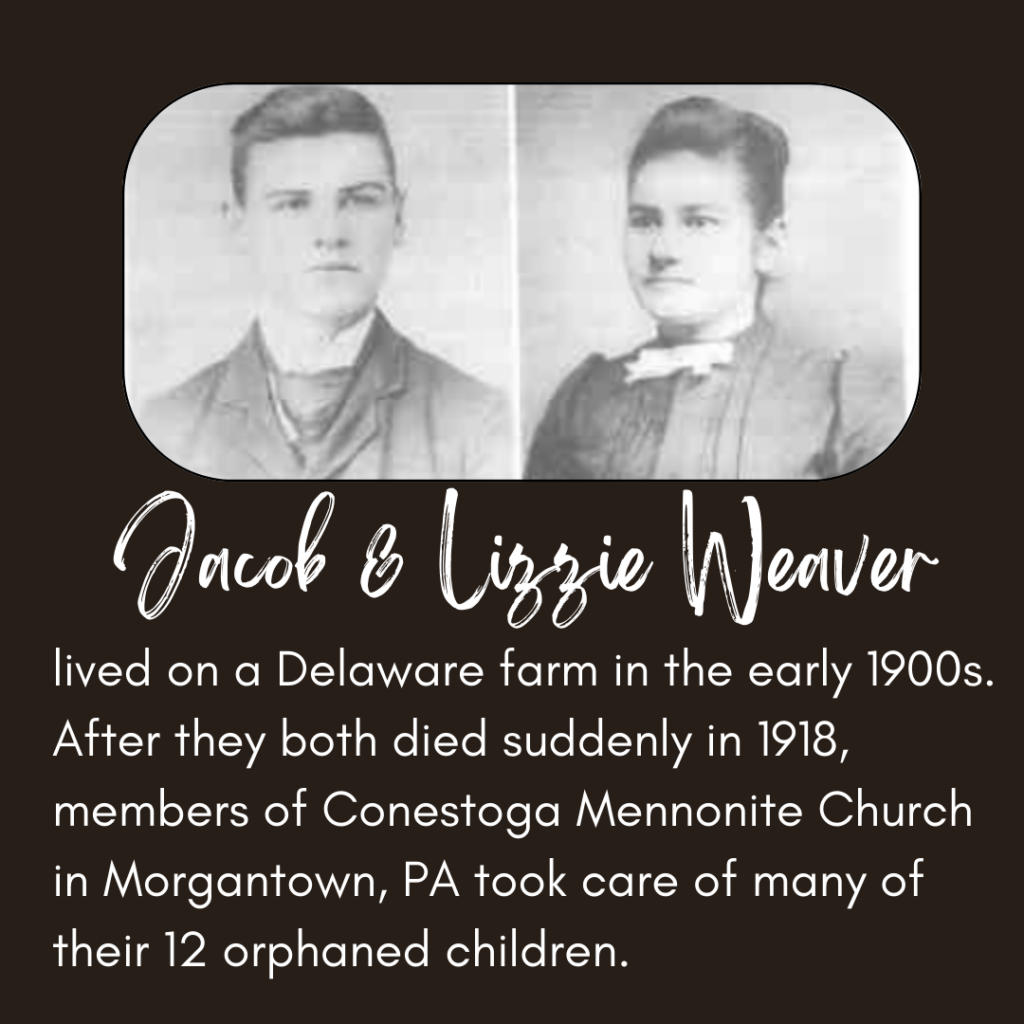
God’s Care for 12 Orphans
Mary’s brother, Jake, traveled to Morgantown, Pennsylvania to ask a woman named Lydia Petersheim, from Conestoga Mennonite Church, to help the children manage the farm. Together, they all returned to Delaware.
It was soon clear that the farm was too much for the children and Lydia to handle, so, in 1920, all of the children came to Pennsylvania, and different Mennonite families took them in. In that era of hard work, with lots to be done and many mouths to feed, the orphans were expected to work for their keep. For anyone who has spent time in southeastern Pennsylvania, many of the names of families that took them in will have a familiar ring to them: Stoltzfus, Mast, Hertzler, Beiler, Hartz, Kurtz and Martin.
Mary and her brother Daniel–Ed’s grandfather– went to live with Christian and Della Mast.
“We all lived to enjoy full adult lives,” Mary wrote.
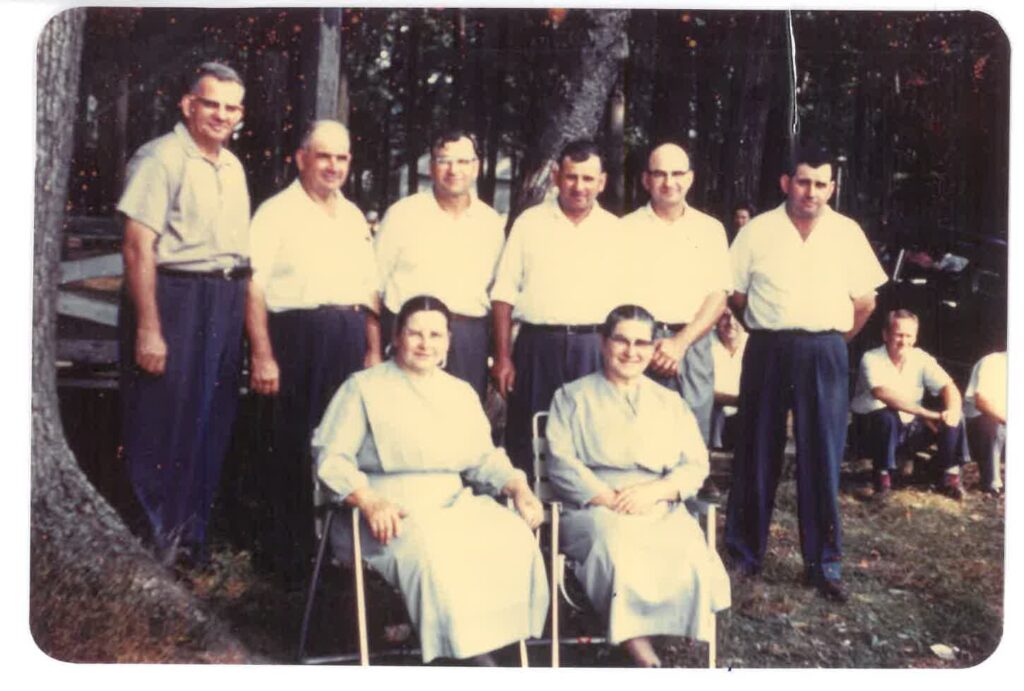
Jake Weaver married Lydia Petersheim, who had come to help run the farm. They had one child of their own and opened their home to many children from broken homes. As for Mary, she married Naaman Stoltzfus, the brother of a man whose family she worked for.
” I do not think that any young couple were happier than we were with what we had. It was great to plant your own garden, milk your own cows, and feed the chickens. Oh, I was so happy and would sing a lot.”
Daniel Weaver Buys An Orchard
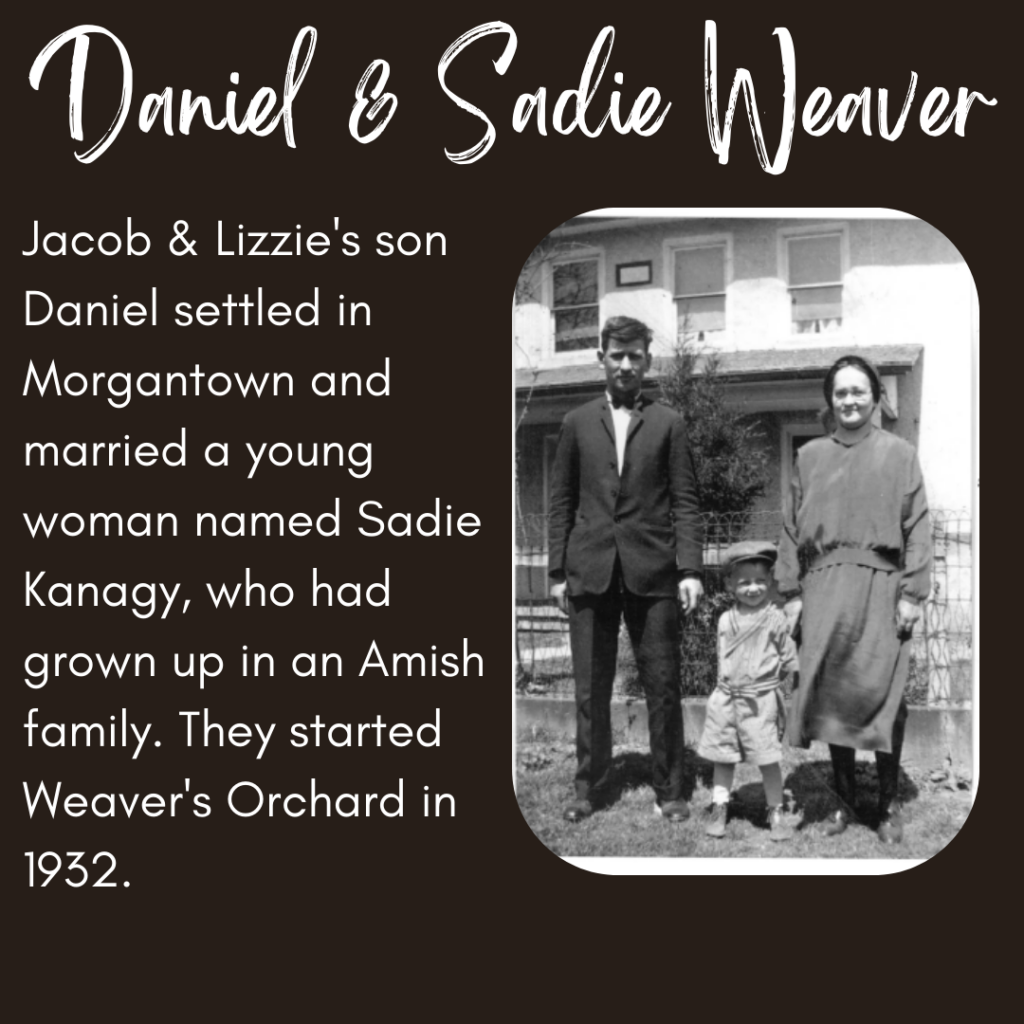
Daniel Weaver, meanwhile, took an adventurous trip west with friends, working for farms along the route to finance their journey.
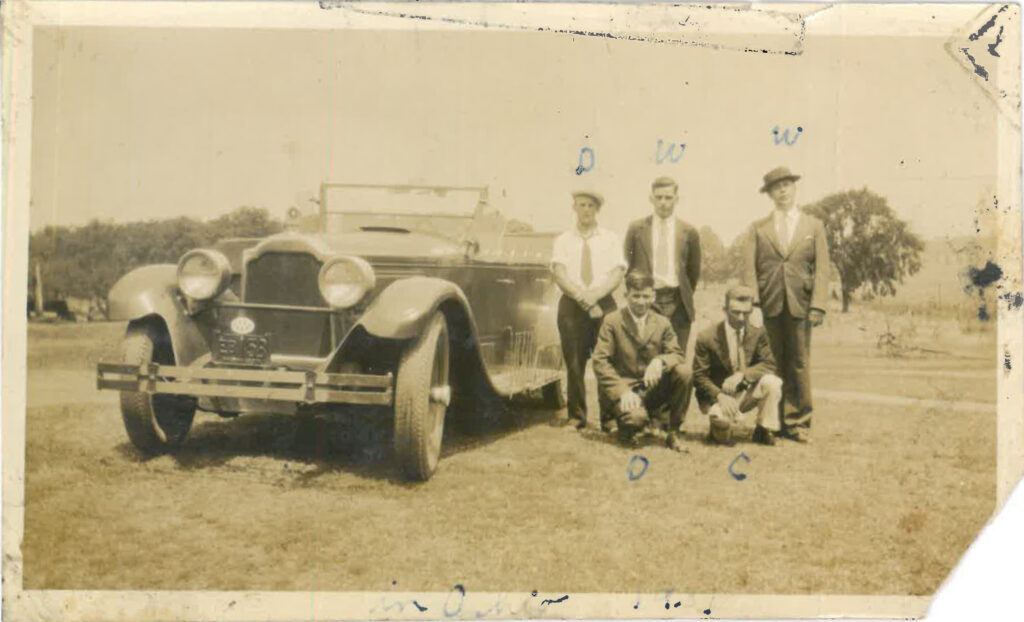
When Daniel returned to the Morgantown area in 1932, he purchased the property that was to become Weaver’s Orchard, and married a young woman named Sadie Kanagy, who had grown up in an Amish family.
Like his father, Daniel planted many fruit trees, berries and vegetables. He marketed the produce by the truckload on street corners in the city of Reading. At the time, this was known as a “Huckster route,” which meant he was a type of produce peddler common in those days.

Soon, however, Daniel started selling fruit from the farm.

The Orchard Keeps Growing

One of Daniel and Sadie’s three children, their son Allen, became a partner in the operation. Allen married Miriam Mast and they raised four children on the farm.
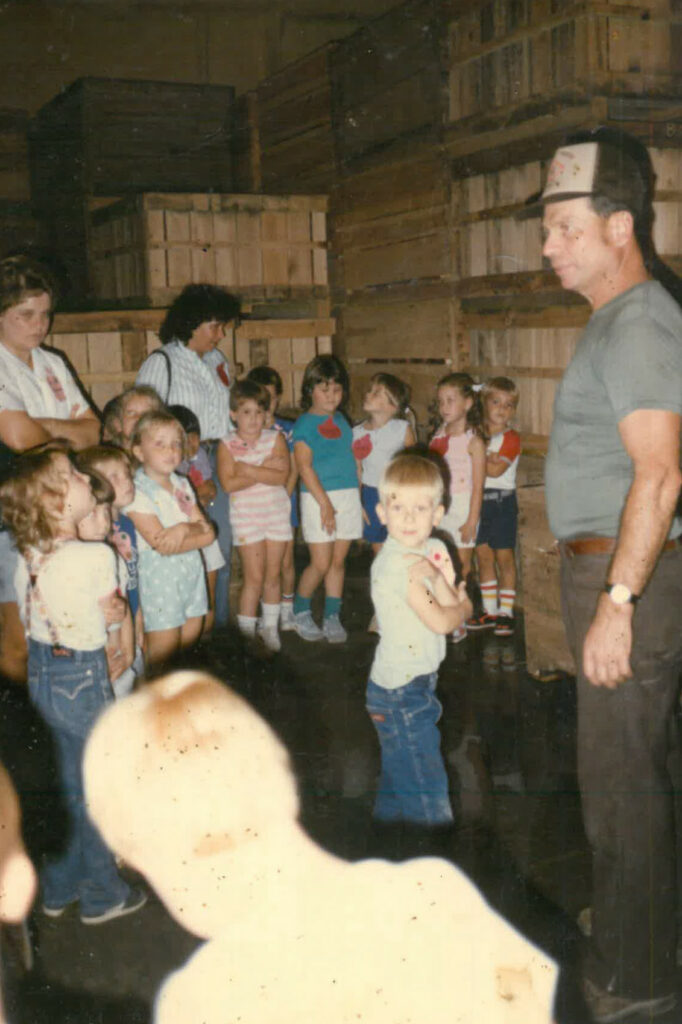
The business continued to grow as the Weaver family sold the produce through farmers markets and on the farm.

Weaver’s Orchard Today
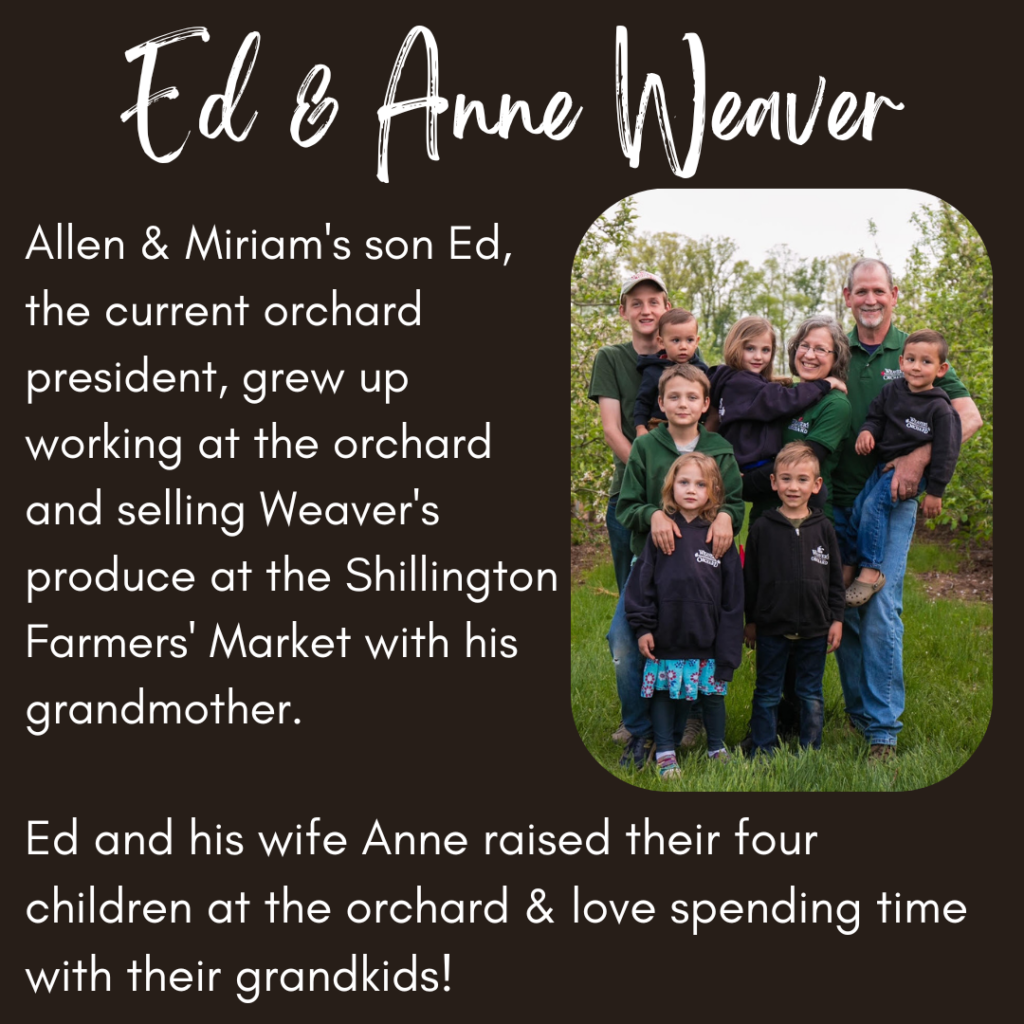
Ed Weaver, the third generation to farm Weaver’s Orchard, treasures many memories of growing up at the orchard. “I learned the art and science of growing fruit from my father and grandfather, working alongside them for many years.”
From his mother and grandmother, he learned about marketing produce–“I have great memories of attending the farmers’ market at Shillington and working alongside my grandmother, and built many great relationships there, and that’s one of the precious parts of this type of operation–building relationships with your customers.”
The fourth generation of the Weaver family is actively involved in day-to-day farming and farm market operations, and you will see many of their kids–Ed and Anne’s grandkids–enjoying the orchard these days too!
This year, 2022, marks the 90th year the Weaver family has been farming this property–90 years of God’s care and blessings.
